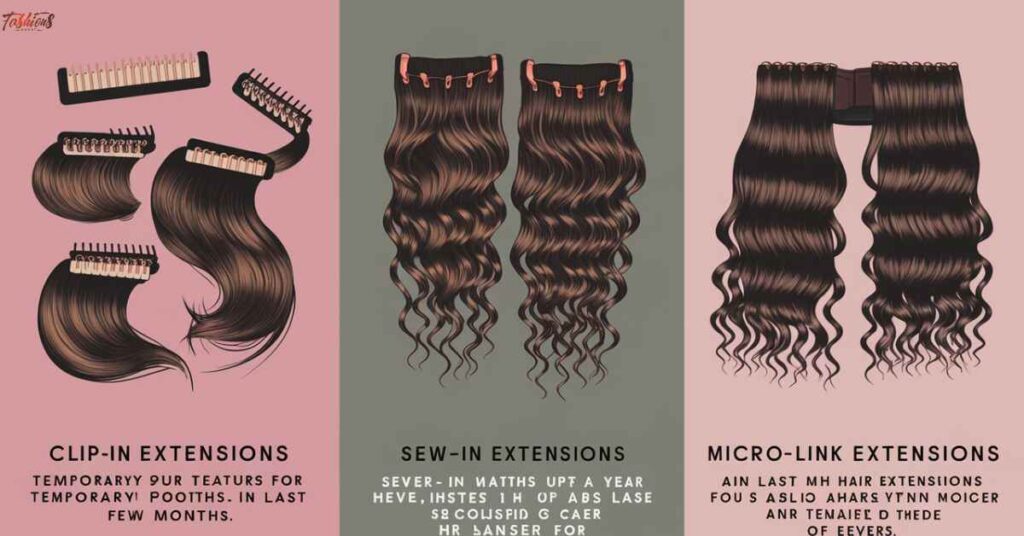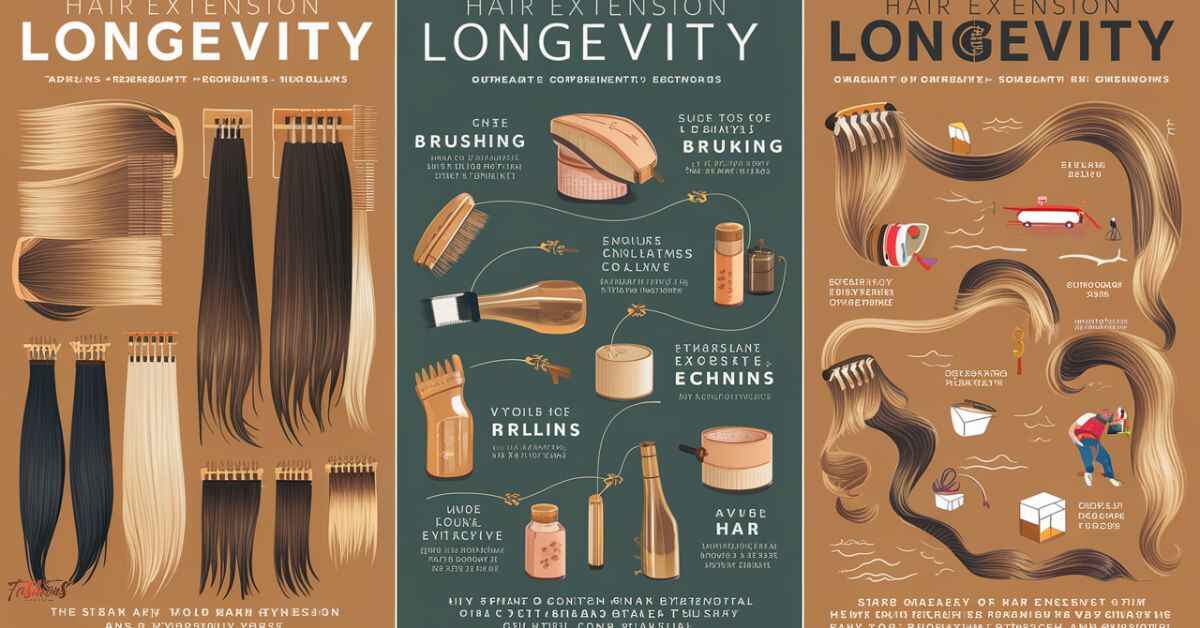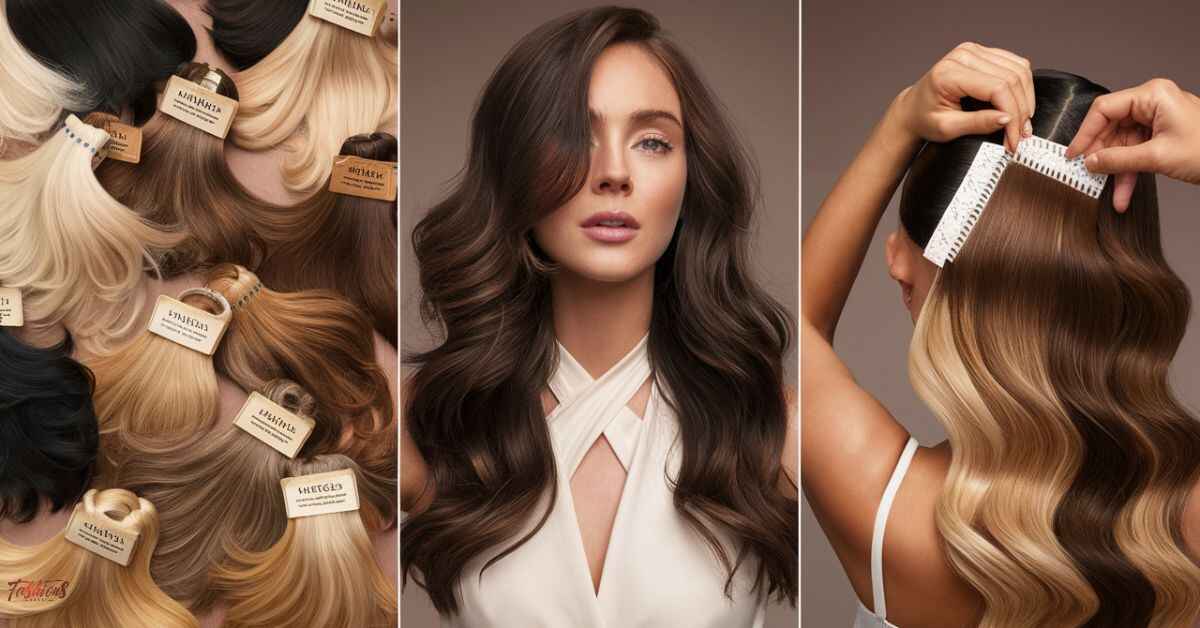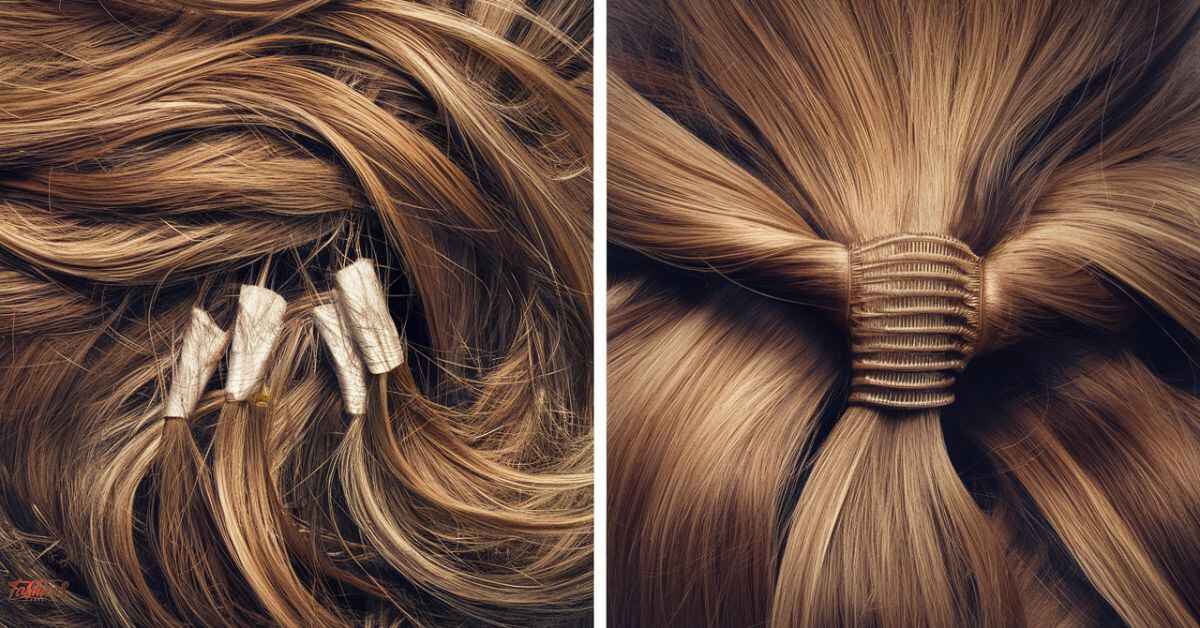Let’s be real-hair extensions are a game-changer! They provide instant volume, length, and style without the wait. But before you invest, it’s crucial to understand how long these fabulous mane enhancers actually last. After all, you want to get your money’s worth, right?
In this comprehensive guide, we’ll unveil the longevity secrets of different hair extension types. Get ready to be an informed extension pro!
Factors Influencing the Longevity of Hair Extensions
Not all hair extensions are created equal when it comes to lifespan. Several key factors determine how long they’ll stay looking fabulous:
- Quality: Human hair extensions trump synthetic ones in terms of longevity and natural appearance. High-quality, ethically sourced human hair can last significantly longer than its synthetic counterparts.
- Installation Technique: Proper installation by a skilled professional is crucial. Improper application can lead to premature shedding, matting, and overall shorter lifespan.
- Aftercare: How you care for your extensions plays a huge role. Using the right products, avoiding excessive heat styling and following recommended maintenance routines can maximize their longevity.
- Heat Styling and Product Usage: Frequent heat styling and using harsh products can cause extensions to dry out, become brittle, and deteriorate faster.
Now that you know what influences their lifespan, let’s dive into the different types of hair extensions and their expected durability.
The Lowdown on Different Types of Hair Extensions
Here are different types of extensions hair:
Fusion/Pre-Bonded Hair Extensions
What are they? These extensions are attached to your natural hair using a keratin-based adhesive or hot fusion method.
Average Lifespan: 3-4 months
Care Tips:
- Avoid excessive heat styling
- Use a gentle, extension-friendly brush
- Schedule timely repositioning appointments every 2-3 months
Tape-In Hair Extensions
What are they? Wefts of hair are sandwiched between adhesive strips and applied close to the scalp.
Average Lifespan: 4-8 weeks (can potentially be re-taped for a fresh look)
Care Tips:
- Dry hair thoroughly before brushing
- Avoid washing too frequently, as it can loosen the adhesive
Clip-In Hair Extensions
What are they? Temporary, commitment-free extensions with clips that easily attach to your natural hair.
Average Lifespan:
- Synthetic: A few wears (if heat-styled, even shorter)
- Human Hair: 3-6 months or longer with proper care
Care Tips for Human Hair Clip-Ins
- Use sulfate-free, extension-safe shampoo and conditioner
- Gently detangle and store properly when not in use
Sew-In Hair Extensions
What are they? Your natural hair is braided, and wefts of hair are sewn onto the braids using a needle and thread.
Average Lifespan: 6-8 weeks (maximum of 4 months recommended)
Care Tips:
- Gently wash in a sink or with a sprayer
- Moisturize the braids and edges weekly
- Avoid excessive tension or pulling
Microlink Hair Extensions
What are they? Small sections of your hair are attached to wefts using tiny, silicone-lined beads.
Average Lifespan: 3-4 months with proper care
Care Tips:
- Use a Loop Hair Extension Brush for gentle detangling
- Avoid harsh shampoos and conditioners
Read this blog:How Much Are Hair Extensions?
Wigs (Natural and Synthetic)
What are they? A full head of hair attached to a cap or base that covers your entire head.
Average Lifespan:
- Natural Wigs: 10-12 months
- Synthetic Wigs: 4-6 months
Care Tips:
- Limit heat styling
- Store properly in a wig case when not in use
- Handle gently to avoid shedding or tangling
Maximizing the Lifespan of Your Hair Extensions
To get the most bang for your buck, follow these tips to ensure your extensions stay gorgeous for longer:
- Invest in High-Quality Extensions: Opt for reputable brands that use 100% ethically-sourced human hair. High-quality extensions are less prone to shedding, tangling and damage.
- Follow Proper Installation and Removal Procedures: Seek out experienced, certified professionals for application and removal. Improper methods can cause hair breakage and damage.
- Use Sulfate-Free, Extension-Safe Hair Care Products: Regular shampoos and conditioners can strip extensions of their natural oils, leading to dryness and breakage.
- Avoid Excessive Heat Styling and Chemical Treatments: Limit the use of hot tools and harsh chemicals, as they can weaken and deteriorate the hair.
- Schedule Regular Maintenance Appointments: Depending on the extension type, you’ll need to visit your stylist every 4-8 weeks for adjustments, repositioning, or even complete removal and reinstallation.
Signs It’s Time to Replace Your Hair Extensions
Even with meticulous care, all good things must come to an end. Watch out for these telltale signs that it’s time to bid farewell to your beloved extensions:
- Excessive Shedding, Matting, or Tangling: A few stray strands are normal, but if you’re losing clumps or struggling with constant knots, it’s time for a refresh.
- Dryness, Brittleness, or Lack of Shine: Extensions that feel like straw and look dull are past their prime.
- Visible Wear and Tear on Bonds or Wefts: If the attachment points or wefts are visibly damaged, it’s best to remove them to prevent further harm to your natural hair.
- Uncomfortable or Improper Fit: As your natural hair grows, extensions can shift and feel loose or tight. An improper fit can lead to discomfort, damage, and an overall unnatural appearance.
Remember, the key to long-lasting, gorgeous hair extensions is investing in high-quality products, following proper installation and care routines, and knowing when it’s time for a replacement.
So, what are you waiting for? Consult with a professional stylist, and embark on your fabulous hair extension journey today!
Also read: Does Mounjaro Cause Hair Loss? Expert Review (2024)
Frequently asked questions
How often should I get my hair extensions moved up?
Depending on the type of extensions, you’ll typically need to visit your stylist every 4-8 weeks to have them adjusted or moved up as your natural hair grows out. This helps maintain a seamless blend and prevents discomfort or damage.
Can I reuse the same hair extensions?
For some extension types like tape-ins, the same extensions can potentially be reused if properly removed and still in good condition. However, with methods like fusions or sew-ins, it’s generally recommended to install new extensions each time.
Do hair extensions cause hair loss?
When properly installed by professional and cared, hair extensions should not cause hair loss or damage to your natural hair. Improper application, excessive tension, or neglecting maintenance can lead to issues like traction alopecia.
How do I brush hair extensions?
Always use a loop brush or extension brush specifically designed for hair extensions. Brush gently from the bottom up, being careful around any bonds or attachment points. Brushing extensions when wet can cause excessive shedding.
Can I swim with hair extensions?
It’s generally recommended to avoid submerging hair extensions in water, as this can loosen bonds and cause matting or tangling. If you do swim, tie your hair up and use a leave-in conditioner to help protect the extensions.
How much do hair extensions cost?
The cost of hair extensions can vary widely depending on the type, length, and quality of hair used. On average, you can expect to pay $200 to $1,000 or more for professional installation, not including future maintenance appointments.
Conclusion
In the ever-evolving world of hair extensions, it’s essential to be an informed consumer. By understanding the factors that influence longevity and the unique characteristics of each extension type, you can make a well-informed decision that fits your lifestyle and budget.
To recap, here’s a quick overview of the different types of hair extensions and their average lifespans:
- Fusion/Pre-Bonded: 3-4 months
- Tape-In: 4-8 weeks (can potentially be re-taped)
- Clip-In: 3-6 months or longer for human hair; a few wears for synthetic
- Sew-In: 6-8 weeks (maximum of 4 months recommended)
- Microlink: 3-4 months
- Natural Wigs: 10-12 months
- Synthetic Wigs: 4-6 months
Remember, these are just general guidelines. With proper care and maintenance, which includes using high-quality, extension-safe products and avoiding excessive heat styling, extend the lifespan of your extensions. Additionally, scheduling regular appointments with your stylist will also help in maintaining their quality and durability over time.
Ultimately, the decision to invest in hair extensions is a personal one. By educating yourself on the different options and their associated commitments, you can confidently choose the right extensions that complement your lifestyle and desired look.
Don’t hesitate to consult with a professional stylist who specializes in hair extensions. They can provide personalized guidance and recommendations tailored to your unique needs and preferences.
Embrace the world of hair extensions and enjoy the confidence boost that comes with luscious, voluminous locks! With the right knowledge and care, you can rock gorgeous mane enhancements for months to come.











